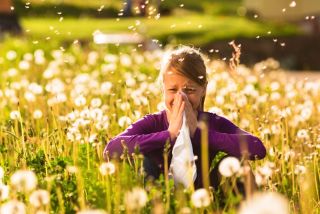Seasonal allergies are the most common type of allergy. There are many different kinds of seasonal allergies, including pollen, trees, grass, weeds and molds. We’ll explore each of these below.
Pollen Allergies
Exposure to pollen most often causes intense itching, sneezing, watery eyes, etc. Allergies begin when plants release pollen, which is produced to spread its genetic material.
Pollen from flowers is spread by insects that carry it from flower to flower, containing it to a certain extent. However, trees, grasses, and weeds launch the pollen in the air causing it to fly, in some cases, for miles.
Currently, there is a high level of interest in allergies that leads to pollen counts and warnings of pollen levels on the news.
Allergies to Trees
Throughout most of the United States trees pollinate (release their pollen) during early spring or from March to June. This is especially true during the Springtime in Kansas City when there’s lots of blooming plants and trees!
It is also common for a person to be allergic to only particular tree pollen and not others.
For example, while Oak tree pollen may cause a person to develop itchy eyes, sneezing, headaches, and nasal blockage, the Elm tree pollen may not affect them at all. So once the Oak tree is done pollinating they may feel better, while others remain bothered by other triggers.
Grass Pollen
This process starts later in the spring, around the middle of April. You can see that grass is pollinating due to fast growth and the production of seeds. Generally, our lawns are cut short enough so that seeds are not allowed to develop. Grass can pollinate throughout the summer, and in some areas almost all year.
Allergies to Weeds
In the fall or towards the end of summer, weeds start to pollinate. Weeds grow all summer but their pollen is usually released later in the growing season.
Ragweed is a very strong allergen, so if someone is allergic to ragweed it will generally be his or her biggest cause of allergy problems. As seasons change, there may be different allergens in the air causing allergic responses.
Mold Allergies
Molds can cause allergic problems and can be seen year round, with spikes occurring in the spring and fall.
Molds that cause the majority of problems are saprophytes, which digest dead plant life.
The mold spore (the seeds that spread mold) count is significantly higher after heavy rains or in droughts because a heavy rain will destroy the vegetation along rivers, streams, and ponds, which creates more food for molds.
Meanwhile, a lack of water during a drought also causes plants die leading to more food for molds in turn making higher mold spore counts in the air.
More About Allergies:



